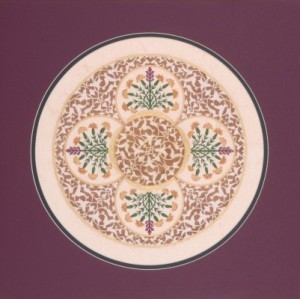
It means carving. It is an art of ornamentation brought by carving out any shape or text from paper or leather surfaces with the help of a special chisel. The part that is carved out in the solid art and the part that is pasted to another place is called "male carving", and the part of the carved space is called "female carving". Among the quilling patterns encountered in handwritings, on the covers or on the examples of khatt are flowers in the vase, single flowers, bouquets and landscapes. Those who engage in the art of quilling are called "Katı’ân" or "efşancı".
The earliest examples of engraving on paper are found in Iran. Its arrival to the Ottomans dates back to the 16th century. The ever-evolving paper carving in the 16th century continues to improve with works that fit the artistic understanding of 17th and 18th centuries. Starting from 17th century, the masters such as Bursalı Mevlevi Fahri Dede, Nakşî, Halazâde Mehmed, Canbazzade Osman, Efşancı Ahmed are well-known in Turkish paper graving.
This technique is carried to Europe through some of the works Western travelers took with them when returning to their countries from Anatolia in the 17th century. As a matter of fact, in the late 16th and early 17th centuries, paper graving starts to attract attention in the West. The Europeans who embraced this art will soon develop their own style, which they call the silhouette (shadow). In Turkey, since the 1920s, it is resurrected with the researches, publications and workshops done by Ord. Professor Dr. A. Süheyl Ünver and continue to be performed with traditional methods.




